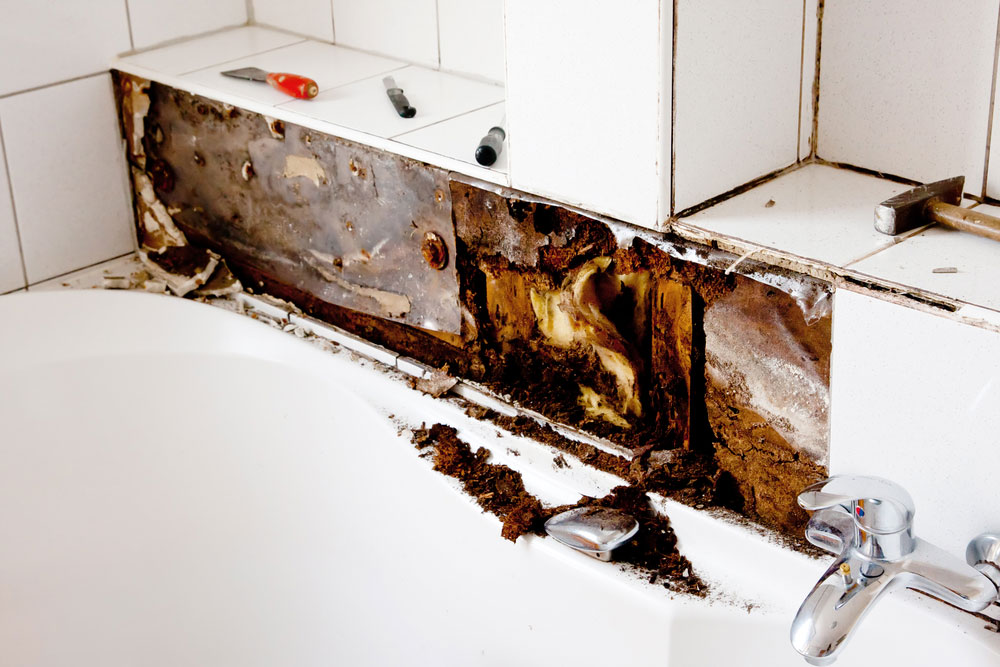Listed here below you will find additional high-quality expertise concerning Looking for Signs of Water Damage in the Bathroom.

The washroom is exceptionally at risk for wet buildup and potential water damage due to the frequent use of water in it. This short article provides easy evaluation techniques to help discovering water damage risks.
The frequent use of water in the restroom makes it extremely at risk for wet buildup and also possible water damages. By checking it frequently, you can minimize water associated damages.
The following set of inspections is easy to perform and also need to be done as soon as in every three months in order to keep your washroom healthy as well as to prevent possible water problems caused by the bathtub, the shower, pipeline joints as well as plumbing, sinks, cabinets, and also the bathroom
Do not overlook performing these examinations and also be complete while executing them. Remember that these simple inspections can save you a lot of cash by supplying early signs for water damage
Sinks and Cabinets
Sinks and also cupboards are exposed to dampness and also moisture everyday and also are frequently overlooked. Evaluate consistently under the sink as well as on the counter top above it. Fix any type of drip in the trap as it might suggest drainpipe issues. Look around the sink, sluggish draining pipes may show an obstructed drain. Replace sink seals if they are split or loosened.
Bath tub and Shower
The shower and also bathtub need unique attention as well as upkeep. Examine the floor tiles and replace if split. See to it that there is no missing out on cement between the floor tiles. Check as well as replace broken caulking at joints where the walls meet the flooring or the bath tub. Blocked drains pipes as well as pipelines issues will certainly avoid the bath tub from drying and also may indicate serious troubles below the tub. Talk to an expert immediately to avoid architectural damage. Focus on discolorations or soft areas around the bath tub wall surfaces as they may indicate an internal leakage.
Plumbing
Signs for water damage are difficult to discover given that a lot of pipelines are installed inside the wall surfaces.
Pay unique attention to floor covering and walls moisture and also spots as they may show an undetectable plumbing issue. Examine moisture levels in adjacent areas too.
The Toilet
The toilet is a susceptible water junction. Inspect the water lines and search for leaks around the toilet seat, in the hose, as well as under the water container. If you detect any indicators of moisture on the flooring around the bathroom, check for leakages in the toilet rim and storage tank seals.
Know that hanging toilet dish deodorants enhances the chances for blockages.
Water Damage Signs In The Bathroom To Avoid Cleanup
Musty smell
This is one of the easiest signs to catch because musty smells are so odorous. The damp, earthy, moldy smell should be a big red flag. The smell will develop when moisture gets trapped in surfaces, and begins to facilitate mold growth. Leaking pipes under cabinets, inside walls, and behind shower fixtures will cause moisture to stay trapped and not dry, which will lead to mold growth and spread. As soon as you notice any musty smells in your bathroom, have it checked for hidden water damage and cleanup signs.
Visible mold
If the smell isn’t there to give it away, sometimes you will actually see mold growth. Finding mold in your bathroom is a serious problem, because mold is very harmful to your health. By the time mold growth is visible, it also means that water damage has already occurred and been present for some time. The only way the mold problem can be resolved is to find the source of the moisture and get it stopped. To safely and adequately remove mold, you need to have professionals handle the remediation. Do not waste any time in getting mold problems addressed, fixed, and sanitized so that you can protect you and your family from the many respiratory symptoms caused by mold exposure.
Damaged floors
Bathroom floors should be able to withstand some exposure to water while still remaining in good condition. However, when excess exposure or water leaks occur, they will begin to damage even the most water-resistant flooring. If you notice any cracking, bubbling, staining, or warping on your bathroom floors, there is probably a water leak somewhere causing the distortion. If you notice areas of the floor have become softer, or even have a spongy feeling, there is probably damage to the subfloor. Subflooring is typically made up of plywood. When plywood is exposed to water or moisture, it will absorb it. Once it has become saturated, the weight of the excess water will cause the wood to swell and soften. Check the floors in your bathroom frequently to catch any of these sings before they lead to damaged subflooring.
Changes on walls
When water leaks behind walls, it will cause changes in the drywall. Peeling plaster, blistering paint, and soggy wallpaper are all good indicators that excess water is building up behind the wall. Water leaking behind drywall will cause it to swell and be soft to the tough. If you start to notice gaps along the trim of your walls, or where tile meets the wall, it could also be a strong indicator that there is a leak behind the wall. Any changes, distortion, or damage on the walls should be evaluated as soon as you notice it to prevent further water damage and cleanup.

I was shown that report about Preventing Water Damage in the Bathroom from someone on a different web page. Don't hesitate to take the time to promote this article if you appreciated it. Thanks a bunch for your time. Visit again soon.
Browse Our Site